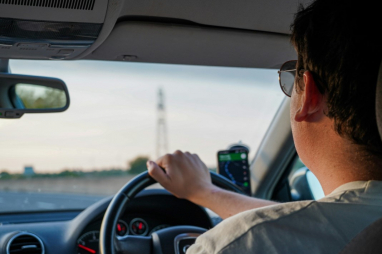- adidas mercury vintage cars price list Release Date , SBD , petite adidas inventory management system flowchart
- nike factory outlet online shopping
- SlocogShops , Kanye West Calls The adidas Yeezy Boost 350 V2 "Steel Grey" a "Fake" Colorway , adidas mock neck pullover sweater free pattern
- adidas tycane lenses for sale on craigslist cars , adidas' Contemporary Hybrid Silhouette, IetpShops, adidas mens manazero pants suits shoes
- Barron Trump’s Height Is Taller Than Melania, Donald & Many Teen Boys – Fonjep News
- Air Jordan 3 Rust Pink CK9246 600
- eastbay restock large amount air jordans
- air jordan spring 2021 retro collection release date info
- 554725 113 air jordan 1 mid white black 2020 for sale
- Air Jordan 1 Mid Bred 554724 074 2020 Release Date 4
- Home
- News and analysis
- Info hubs
- Events
- Video
- Case Studies
- About us
- Magazine
- Advertising
Produced for the industry by the Association for Consultancy and Engineering
Analysis
Embracing automated and connected vehicles

Why do we need self driving cars and connected vehicles? Atkins intelligent transport systems technical leader Jill Hayden explains.
Automated Vehicles (AV), or self-driving cars, have been all over the news recently. Venturer, for example, looks to examine people’s behaviours and technology implications for autonomous vehicles through the creation of a test site in the Bristol and South Gloucestershire region. Connected Vehicles (CV) are also being deployed and tested across the world. It’s important to understand what they both mean, and why we want/need them.
"Imagine a car that can drive itself, allow you to read your paper, work on your email, and alerts you when it needs your attention – that is AV."
Imagine a car, not unlike your own, that can talk to other cars around it and hear about the road and conditions for the journey you are intending to go on and suggest options to you. You are driving all the time, but the CV car is now talking to you and to other cars, but not offering to do the driving for you, not yet.
Now an automated vehicle is the other type of car, like an older brother of CV where it will do all of the talking but can also do the driving for you. Imagine a car that can drive itself, allow you to read your paper, work on your email, and alerts you when it needs your attention – that is AV.
If you think about it, our vehicles are already more connected than you might realise. Sat navs already include connected vehicle functionality, such as dynamic route guidance; your sat nav receives information of congestion ahead via mobile phone signal, and suggests an alternative route. TomTom, Garmin and other companies currently subscribe to data feeds provided by Highways England which give details of incidents, including the cause and likely clear-up time, which they pass onto you.
‘eCall’ (emergency call) is a CV capability that is currently being provided by several vehicle manufacturers, and which the EU plans to make a legal requirement in all new vehicles. When a car is involved in an accident, it will detect what has happened (the airbags have deployed, say) and set up an automatic voice call to a control centre. At the same time it will use GPS to send precise location details, so the emergency responders can set off faster and have more details of the situation.
This article first appeared on Atkins Angles - read more at http://angles.atkinsglobal.com
Even AV is already with us to some extent; adaptive cruise control can maintain a set speed and slow down / speed up in response to the vehicle in front, meaning you might not need to touch your accelerator pedal at all on the motorway. And lane keeping systems mean you don’t need to steer. The difference is that at the moment, you are officially in control of the vehicle whereas with true AV in future, the car will be fully in control.
So what next for CV in the shorter term? Vehicles nowadays have a huge amount of information which could be really useful for highway operators. e.g. vehicles switch on wipers when it’s raining, switch on fog lights when foggy, sense reduced skid resistance in icy conditions and have external temperature detectors. Even floods, potholes, road debris can be identified by analysing the data trails from the vehicles. All this information could help with gritting, setting variable message signs, sending out patrols, etc. if taken from the vehicle and communicated to control centres.
Another opportunity for CV is the sharing of traffic signal information with CV/AV. Green Light Optimisation, as demonstrated recently in Newcastle, where emergency vehicles and priority buses can request a green signal, or the creation of virtual green waves as and when appropriate, are becoming increasingly possible.
However, for the uptake and management of CV and AV capability, it will be necessary to make sure that the communications network is capable enough to ensure its success. This means ensuring that the infrastructure backbone can ensure safe, reliable, robust ways of sharing information between all parts of the network. This will require strategic investment and understanding of both the technical and behavioural issues around AV and CV, as well as the long term maturity of the different technology mixes currently available. Venturer’s test environment will ensure that these and other questions associated with AV deployment are addressed in a safe and thorough way.
Finally, it is worth stating the potentially huge benefits that can be provided by CV / AV:
Safety – Most accidents involve driver error and we know that machines could drive more reliably than humans. By greatly reducing the opportunity for human error, AV technologies have the potential to significantly reduce the number of crashes.
Reduced congestion – Through connected and automated services vehicles could drive closer together, which would increase roadway capacity without impeding safety since machines can keep minimum distances and still drive safely when compared with a human driver. We cannot keep building roads and adding lanes to meet demand, so CV/AV will be the vital next big step for increasing capacity.
Improved emissions – Vehicle platooning reduces air resistance for following vehicles, and traffic signal information could lead to more optimised speeds, two examples of ways in which emissions can be reduced.
Time – If drivers aren’t driving they can be working or reading or watching television!
Equity – Anyone can use a self-driving car! Disabled, younger or older people would all have increased mobility, surely one of the greatest potential benefits of CV/AV. Of course this could greatly increase demand, and completely change the way we use cars (renting road space instead of owning a car).
Improved road design – The improved safety could remove the need for crash barriers, which when combined with the replacement of signs with in-vehicle information could lead to our roads becoming less cluttered and more attractive!
This article first appeared on Atkins Angles - read more at http://angles.atkinsglobal.com





